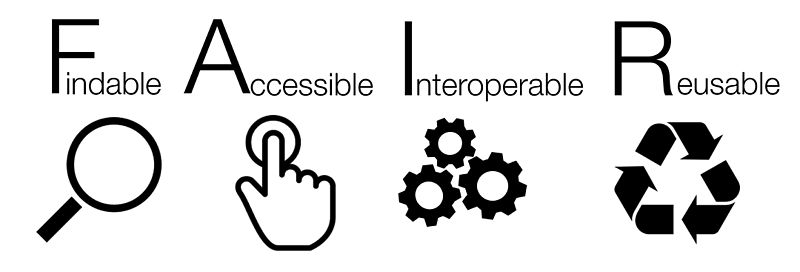
The F in FAIR
Findable
Accessible (where possible)
Interoperable
Reusable
Ah the last Blog post in the series of 4 regading the FAIR principles. The last or the first, depending on how you look at it :). F for Findable! Quick review from the FAIR website:
F1. (Meta)data are assigned a globally unique and persistent identifier
F2. Data are described with rich metadata (defined by R1 below)
F3. Metadata clearly and explicitly include the identifier of the data they describe
F4. (Meta)data are registered or indexed in a searchable resource
As we’ve ventured through the FAIR principles, we’ve highlighted the reproducibility crisis, we’ve discussed the challenges of interoperability – using the wrench as an example, and we’ve talked about making the (meta)data accessible. Has anyone noticed the PRIMARY theme behind all of these?
Yup my favourite METADATA so this post will be rather short since I’ve tackled many of the aspects that I want to highlight already.
First though, if you read through the FAIR principles they say (meta)data – I would challenge anyone to say the principles say that the DATA needs to be accessible, etc… The FAIR principles were created to help the researchers ensure that the data was FAIR by way of the metadata. We all know we cannot share all the data we collect – but as I noted in an earlier post, we should at least be aware of the data through its metadata. Hence my going on and on and on about metadata, or that love letter to yourself, or better yet the data schema!
So let’s talk briefly about Findable. How do we do this? I know you already know the answer – by documenting your data or by building that data schema! The A, I, and R really can’t happen before we fulfill the needs of the Findable 🙂
We already talk about the unique identifier (DOI) in the A in FAIR post. Now let’s take a closer peak at how we can describe our data. Here, at Agri-food Data Canada (ADC), we’ve been developing the Semantic Engine, a suite of tools to help you create your data schema, a suite of tools to help you create rich metadata to describe your data.
Review what the Semantic Engine can do for you by watching this little video
To address the F principles, we just need to create a data schema, or metadata. Sounds simple enough right? The Semantic Engine tools make it easy for you to create this – so try it out at:
https://www.semanticengine.org/
Remember, if you need help reach out to us at adc@uoguelph.ca or by booking an appointment with one of our team members at https://agrifooddatacanada.ca/consultations/
Let’s continue to build knowledge and change the Data Culture by creating FAIR data!
![]()



